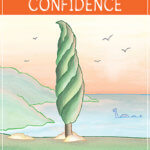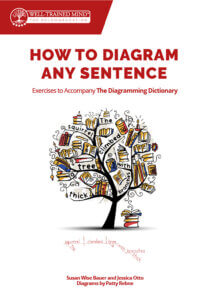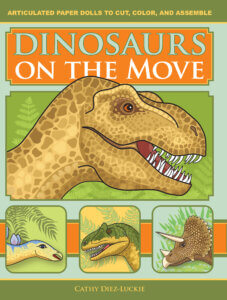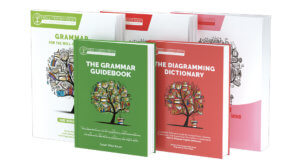
Grammar for the Well-Trained Mind is the only grammar curriculum a homeschooling parent will ever need. But can teachers use it in the classroom? In this video, Susan meets with Jessica Otto, who teaches basic, intermediate, and advanced grammar using Grammar for the Well-Trained Mind. Together, they discuss what teachers can do to make this curriculum effective in the classroom setting.
Here’s a full transcript to follow along with:
Susan: I’m Susan Wise Bauer, the author of the Grammar for the Well-Trained Mind grammar series. And I’m here with my friend and colleague, Jessica Otto. I have primarily taught grammar in a home-school setting, but Jess has extensive experience teaching in the classroom. So she just wants to offer a few ideas on how you might adapt this to teaching in the classroom.
Jessica: Thank you. To teach this series in the classroom, I find that the key to engaging my students is participation. So, in order to encourage participation, I use a white board, or you might use a chart board, and I have them do the exercises from the textbook, from the workbook, right on the board. And they love that. And I let them know right from the beginning that we’re all gonna make mistakes. I’m a grammar teacher. I make mistakes all of the time. So right away, they don’t need to be afraid of making a mistake in drawing a diagram on the board or filling in an answer. And that helps them to relax and gain in confidence from the start.
Susan: But I’m sure if they’re doing the exercises in front of their peers…
Jessica: It could be a little intimidating.
Susan: It could be a little intimidating, yeah.
Jessica: Yes, it can be. But they enjoy that greatly. Another thing that I incorporate…we use a lot of games. So you can even use a Mad Libs game which I know we have some, or you can create your own. Just take a story and leave out a few words, leave out a few nouns or adjectives or verbs. They have so much fun with that. And they don’t even realize that they’re practicing grammar as they’re playing the game.
Susan: Right. So you could take a sentence like, “I enjoy…flying a kite.” And take out that present participle, and say, “Okay, everybody, I want you to come up with the present participle and an object of the present participle. ‘I enjoy,’ and then…”
Jessica: And you can adapt it to their level. So for, maybe a basic grammar student, someone who is in Lessons, about, 1 through 40 of the book, I would just say, “Give me a noun.” Or even I would say, “Give me an ‘ing’ verb.” But for a more intermediate or advanced grammar student, you can use more technical grammatical terms like a gerund or a participle. And then that pushes them a little bit. But they’re still having fun with it.
Susan: Now, how do you encourage your students who are shier and more quiet?
Jessica: Well, I find that most students enjoy writing on the board and participating that way. Speaking in front of other students can be quite scary for a lot of students, so we don’t do a lot of that. But writing on the board seems to be a skill and an exercise that they all have fun with.
Susan: Less frightening for them.
Jessica: It is. It is. Yeah.
Susan: Now, we know that everybody has a grammar rule that trips them up. I myself still struggle with “which” and “that.” I know the rule. I just don’t use it when I write. So if you have a student that really just gets stuck on a particular concept while the rest of the class is sailing merrily on, how do you handle that?
Jessica: Generally, I would email that student and/or parent and say, “I noticed you missed a few on the topic of, let’s say, gerund. Would you like to spend some time with me going over that?” And most of the time the student is eager to master the concept. And the parent is eager for the student to master that concept. So we would meet one on one, maybe for just 20 minutes, and I would just use some exercises from the workbook, some that we may have already done before. But we’ll just go over them one on one so that I can, kind of, see where the mistakes are being made. And it always helps the student greatly.
Susan: Sometimes you just need that one-on-one attention?
Jessica: You do.
Susan: So when you’re using this program in the classroom, you’re looking at a workbook for every student. You really just need one key for the teacher, unless you’re gonna be sending work home with the student, in which case you should probably ask the parents to have the key. And you need the one core instructor text. And that’s all you need for a year of grammar instruction.
Recommended Products
-
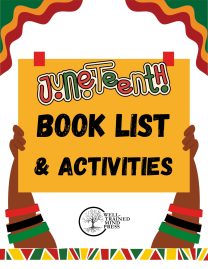
Juneteenth Booklist & Activities
0 out of 5$0.00 Add to cart -
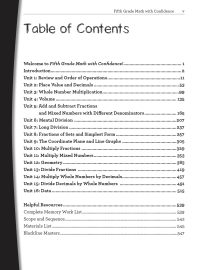
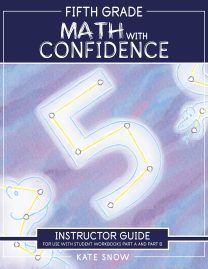
Fifth Grade Math with Confidence Instructor Guide
0 out of 5Starting at:$36.95Original price was: $36.95.$27.71Current price is: $27.71. Select options -
Sale!

Hansel & Gretel and Other Stories: Downloadable MP3
0 out of 5$12.95Original price was: $12.95.$8.42Current price is: $8.42. Add to cart -
Sale!

Dorothy and the Wizard in Oz: Downloadable MP3
0 out of 5$25.95Original price was: $25.95.$16.87Current price is: $16.87. Add to cart -
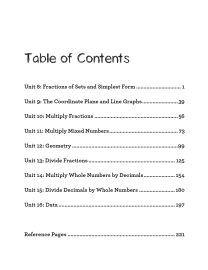 Sale!
Sale!
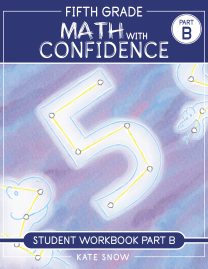
Fifth Grade Math with Confidence Student Workbook B
0 out of 5$16.46 – $21.56 Select options This product has multiple variants. The options may be chosen on the product page -
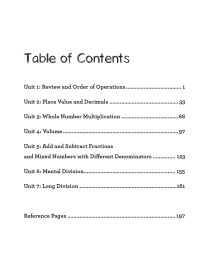 Sale!
Sale!
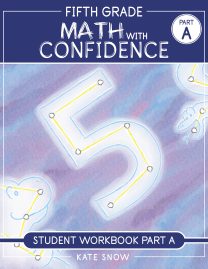
Fifth Grade Math with Confidence Student Workbook A
0 out of 5$16.46 – $21.56 Select options This product has multiple variants. The options may be chosen on the product page
ABOUT THE AUTHOR
Susan Wise Bauer
Join over 100,000 homeschooling families
For the latest offers, educational insights, products and more.
By joining you agree to our privacy policy.






